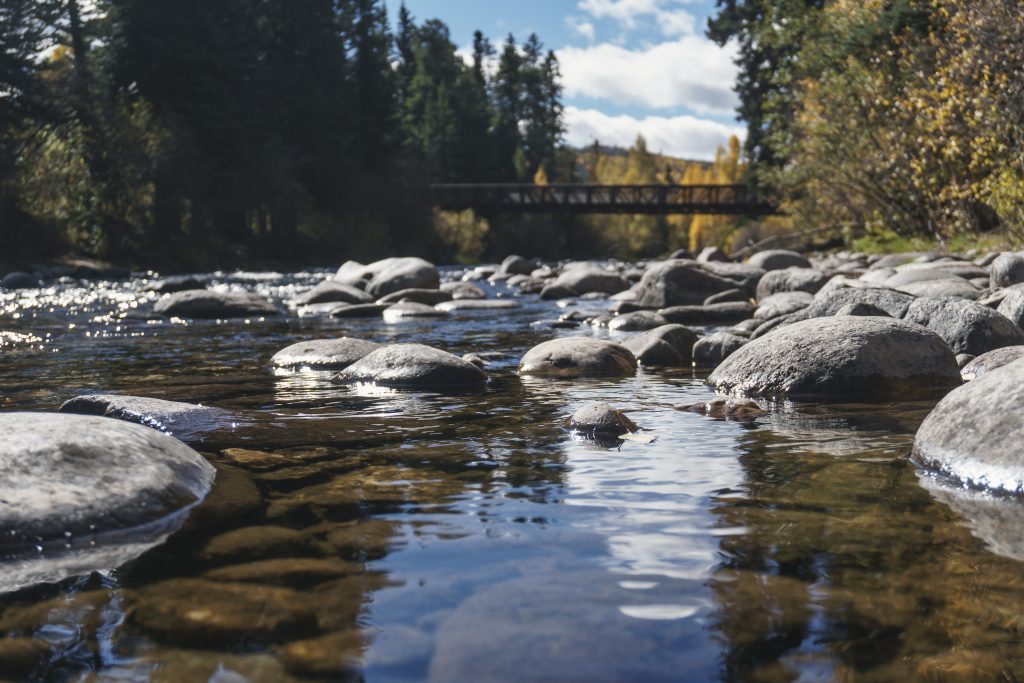
Dear Eartha, with all the rain last summer and snow this winter, can we all breathe a sigh of relief around the Colorado River and not worry about conservation so much?
While springtime in the mountains tends to look a little different — as in, it’s still snowing up here while flowers are popping up in warmer climates — it’s officially spring! We probably won’t be putting away our skis just yet, but this is the time when temperatures are starting to warm and snow begins to melt. On March 22 (which just happened to be World Water Day!), Colorado’s snowpack was measured at 142 percent of average. All this snow will certainly help drought conditions as we roll into the summer months, but there are other factors that play into the need to conserve the Colorado River’s waters.
The Water Cycle and A Warming Climate
Springtime is an important phase of the water cycle. It’s when hydrologists (that is, water scientists) look at this year’s snowpack and observe how fast (or slow) it melts, soaks into the soil, and then flows as runoff into streams. Soil moisture is a big factor in how fast snowmelt will hit our streams and becomes available for us to use. Like a wet sponge, soil that is already saturated can’t absorb more water, therefore spring precipitation will hit rivers faster. And while the heavy rains last summer helped to soak our high alpine soils, the drier September and October months stalled that progress.
So does a warming climate. Temperatures in the Colorado River Basin are predicted to rise another 2 to 5 degrees Fahrenheit by 2050. Hotter temperatures dry out soils, and dry soils suck up snowmelt before it ever makes it to the river. In some cases, the snow and ice vaporize before having a chance to filter into parched soils. In fact, according to a study by the US Geological Survey, with every 2 degrees Fahrenheit of warming, the Colorado River’s average flow drops by 9%.
Talking about the West’s long-running drought, hydrometeorologist (that’s science speak for someone who studies the water cycle) Dr. Benjamin Hatchett told the Colorado Sun, “To get out of those problems, we’re going to really need not just one year, but back-to-back, probably three or four years of really good winters.” The reality is that despite summer storms and epic pow days, we can’t just rely on a few months of good precipitation to reverse the decades of drought our soils have endured.

Downstream Effects
Truth is, the Colorado River is already shrinking. USGS research indicates that streamflow in the Upper Colorado River Basin has decreased 20% over the past century. Drier, warmer conditions are prevalent all along the 1,450 miles of the Colorado River, which is fed by the Blue River and thousands of other tributaries across the West. And that’s a big problem for everything that depends on the river: nearly 40 million people, 5.5 billion acres of farmland, seven wildlife refuges, and power for 780,000 homes. Even when we are experiencing more precipitation at the headwaters of the Colorado River, our neighbors to the southwest are seeing river flows low enough to trigger drought restrictions — and that’s why water conservation is always important.
Be the change you want to see in the world
Because water affects us all, we need everyone to take action. That means you! The first and easiest step is to take a hard look at our own backyards. I’m talking about our actual yards. If you water a lawn or landscaping, keep in mind that 50% of the water we use outdoors is lost to wind, evaporation and runoff due to inefficient irrigation. But by getting smarter about the way we water our lawns, we can save tens of thousands of gallons and some hard-earned money, too. If you are a resident, business, or home owners association, Water Smart irrigation assessments are a great place to start to see if your system could use a tune up.
As lucky as we are to enjoy fresh snow and a pristine water supply, these aren’t guaranteed in the future. So, let’s take collective action to meet the water needs of today — and tomorrow.
